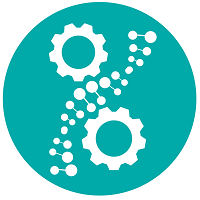Manufacturing & Analytical Characterization – Chemical
Hot Topic: Phase Appropriate Design Controls for Combination Products during Clinical Development
-

Kim Huynh-Ba, MS, PMP, FAAPS
Managing Director
Pharmalytik
Newark, Delaware -

Jiaying Shen, PhD
Distinguished Scientist, Research Sciences, Device Development
Merck & Co., Inc.
Basking Ridge, New Jersey -

Gretchen Vandal, MS, MBA
Executive Director, Global Regulatory Affairs – Head of Devices, Digital and Combination Products
Takeda
Cambridge, Massachusetts -

Shrinivas (Cheenu) Murti, PhD, MBA
Head, CMC Business Process Excellence & Systems
Takeda Pharmaceutical Company Limited
Cambridge, Massachusetts
Hot Topic Speaker(s)
Hot Topic Moderator(s)
This presentation is one part of a proposed 2-hour symposium covering (1) FDA perspective; (2) Industry perspective – design engineering focus; (3) Industry perspective – analytical focus; (4) Panel discussion/Case Studies
FDA perspective: (a) Current thinking on device-constituent IND data requirements for combination products including biocompatibility, extractables and leachables, device functionality, essential performance requirements, etc.; (b) Verification and validation expectations for INDs; (c) Bridging expectations for device-constituent changes across clinical phases and relative to commercial product in (i) early phase studies and (ii) pivotal studies.
Development of the device-constituent part of combination products follow the Design Controls process which is agnostic to clinical phases driving drug development. Currently no guidelines or standards exist that inform drug and device development scientists to coordinate combination product development and align with regulators in a clinical phase appropriate manner.
The intended Symposium format is one speaker from FDA and 2 presentations from industry subject matter experts, followed by a panel discussion with 1-2 comprehensive case studies:
Introduction of topic by moderator (5 mins)
FDA perspective (30mins) - note: proposed FDA Speaker to be finalized
Industry perspective – design engineering focus (30mins)
Industry perspective – analytical focus (30mins)
Panel/Case Studies (Q&A) (30 mins)
Presentations would include practical situations and examples to ensure connectivity between strategies and enhance the health authority-industry dialogue. Broad audience engagement would come through the panel discussion amplified by comprehensive case studies on 1-2 device platforms for combination products.
The target audience is pharmaceutical scientists, analytical scientists and engineers working on combination products such as pre-filled syringes, autoinjectors, inhalers, implants, transdermals, and other complex electromechanical devices in technical, quality and regulatory areas. The learnings from this session would be relevant to all combination products intended to be commercialized in the US and major markets.
Learning Objectives:
- Demonstrate awareness of current regulatory expectations on device constituent bridging in clinical development for combination products
- Understand challenges of engineering design of simple and complex device constituents of combination products
- Define key considerations for phase appropriate control strategy and analytical development from the regulator and industry standpoint


